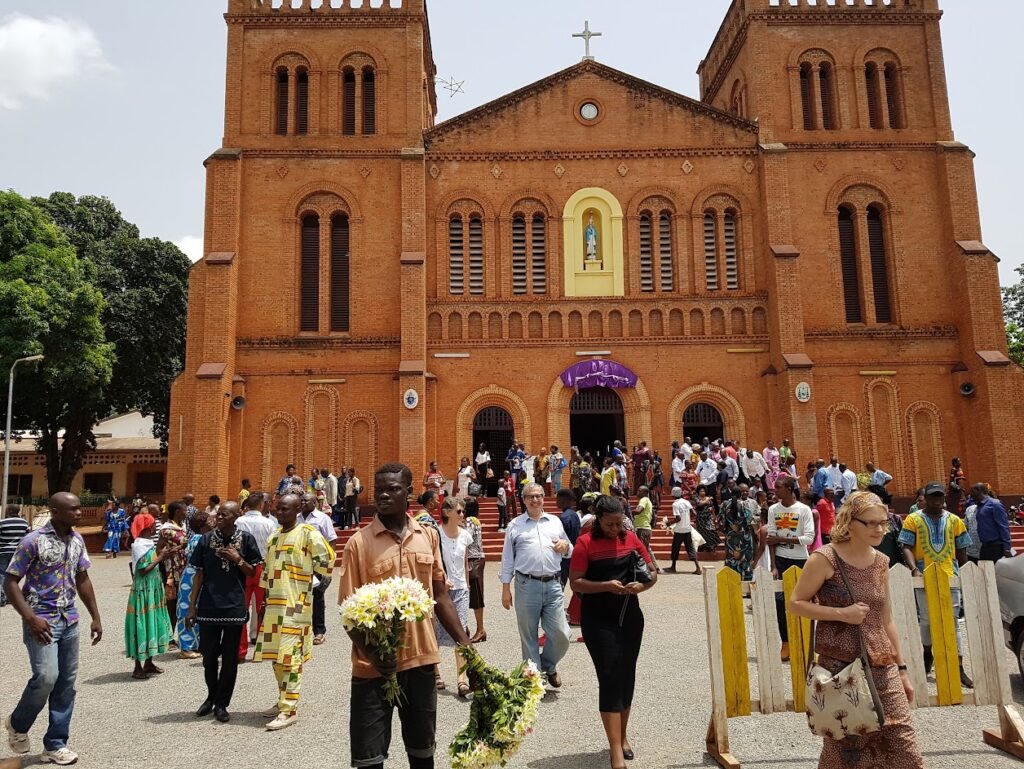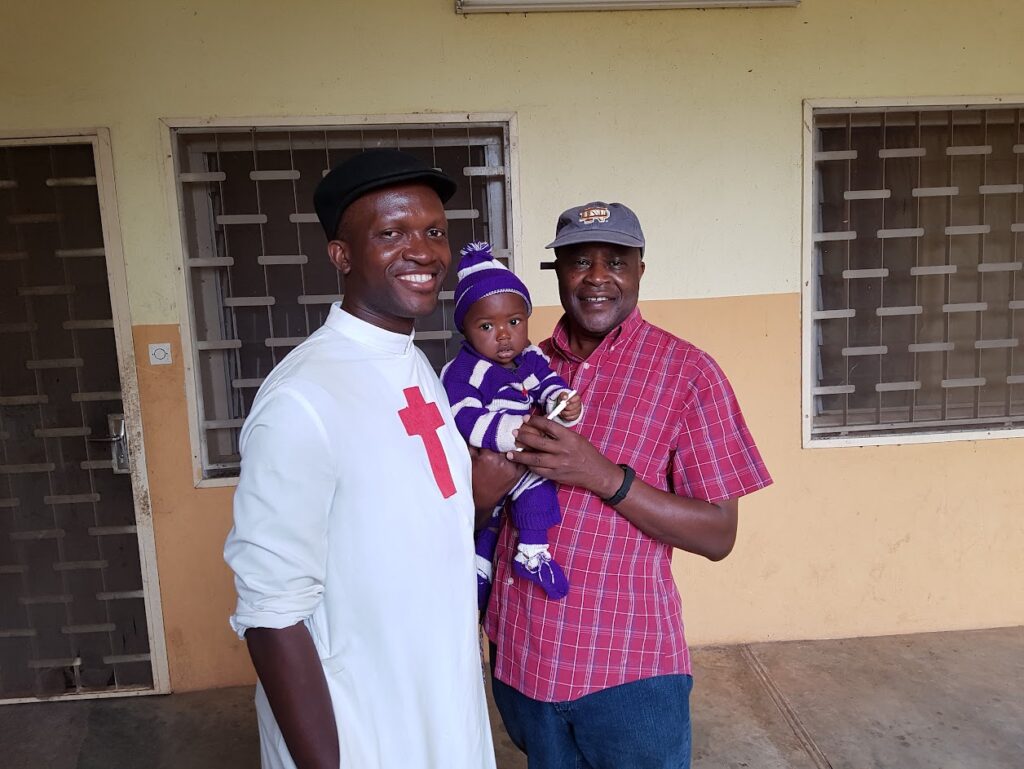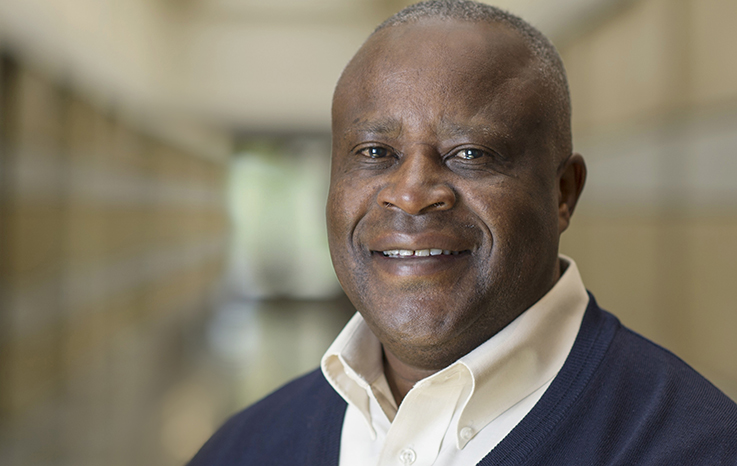
I owe a special debt of gratitude to Marie-Claire Klassen, Emmanuel Ojeifo, William Orbih, Jason Springs, Cecilia Lynch, and Todd Whitmore for taking the time to read and respond to my Who Are My People?: Love, Violence, and Christianity in Sub-Saharan Africa in this book symposium. I am deeply touched and encouraged not only by their responses, but by the many wonderful things they each have said about Who Are My People? They each have made a number of interesting observations about the uniqueness, strengths, and accomplishments of the book. I treasure these very much. The discussants also raise some important critical issues and observations. I treasure these too and take them very seriously. I would have loved to respond to all the issues raised by each of the discussants. However, given the limitations of this forum and space, all I can say is that I will continue to think and reflect on these issues, and hopefully attend to them in some of my future work. Here, however, I can briefly highlight and respond to five key issues—theological portraiture, genre, justice, gender, and the overall structure of the book—that seem to cut across the submissions of the symposium.
Theological Portraiture
The first issue regards the methodology of theological portraiture that I employ in Who Are My People, which has been commented on by all the theologians in the discussion: Klassen, Ojeifo, Orbih, and Whitmore. While noting my debts to Sara Lawrence Lightfoot and Jessica Hoffmann Davis in developing this methodology, the discussants note the uniqueness, freshness, and effectiveness of this methodology for doing theology. Indeed, Klassen rightly points out that one unique way that I employ this methodology in Who Are My People? is to include a theological portrait of myself. That I do so is not simply the outworking of the “narrative” approach, which Whitmore rightly traces to the important influence of Stanley Hauerwas on my thinking, but also reflects a fundamental theological conviction. In my previous work, Born from Lament: The Theology and Politics of Hope in Africa, I noted the task of theology is to “give an account of hope” (1 Peter 3:15) and that responding to this invitation requires taking seriously autobiography as an essential aspect of the theological task. Others (e.g. Mclendon, Dickinkson ) have made a similar point coming from a different angle.
Whitmore raises serious critical issues regarding my use of portraiture, which revolves around the dangers of crossing disciplinary boundaries. Is it possible, he asks, “to be at the same time a theologian and a cultural anthropologist?” Whitmore points out that from the point of view of a cultural anthropology and qualitative sociology, the kind of research in Who Are My People cannot be recognized as valid ethnographic research (my claims notwithstanding) because it suffers from inherent “confirmation bias.” For Whitmore that is of course the fundamental aim and primary achievement of the book, namely to turn what cultural anthropologists and sociologists may view as a vice (confirmation bias) into a virtue, and thus offer empirical grounds for hope. My takeaway from Whitmore’s important discussion is that while the theologian should not shy away from employing ethnographical methods and research tools, she should never seek to be, and in any case will never be fully recognized as, a cultural anthropologist. On the other hand, the theologian should never feel that she has to give sociology or cultural anthropology a privileged position. She is a theologian, and theology is itself a form of sociology. Her goal in remaining unapologetically theological even as she learns from and employs social scientific tools and methods, is to develop and articulate a unique, Christian anthropology or sociology. As a unique form of Christian sociology, theology’s goal is, as John Milbank reminds us, to “tell again the Christian mythos, pronounce again the Christian logos, and call again for Christian praxis in a manner that restores their freshness and originality” (381). This is what I try to do in Who Are My People?
The Question of Genre
A second, but closely related issue of methodology is the question of genre. Klassen highlights the significance of closing the book with a sermon. This genre is not one that is typically deployed in academic work. It may of course be that ending the book with a sermon simply confirms my own idiosyncratic identity as a scholar and as a priest (preaching is what priests do, after all). However, as Klassen rightly notes, ending the book in this way is an invitation to consider the issue of identity not only in terms of its sociological dimensions, but also its spiritual and practical dimensions. She also notes how the sermon points to the significance of “friendship” across divides, which is the goal of the journey of identity, i.e. to embrace and expand a new sense of “we” in the world. Beyond this, however, concluding the book with a sermon is in line with the tonality of the entire book, which is homiletic. One reason behind this is that I have come to increasingly understand theology as a form of preaching. This is consistent with the view of the early Fathers of the Church, for whom the sermon was the primary genre of theological exploration. This is because early Fathers of the Church rightly understood theology as an exercise in the imatatio Christi: an invitation to “re-enact and instigate others to re-enact Jesus the Nazarene the Christ.” In this connection, Orbih rightly notes the deep affinity between my work and Whitmore’s Imitating Christ at Magwi). But this is also the reason why “missiology” (as Ojeifo rightly notes) is at the forefront of Who Are My People? as it should be for every theological enterprise.

The Issue of Justice
A third critical issue has to do with the question of justice. Springs notes that while the portraits I provide in Who are My People expose the logic of love and suffering, they do not explicitly engage the question of justice. Klassen asks” “How does a theology of justice intersect with an excess of love?” Both wanted to see a more explicit engagement with the question of justice. True, an explicit engagement with the notion of justice could have offered a more robust display of the transforming power of love. Love not only redefines the meaning of justice, but it also heals and restores (in its form as restorative justice) the wounds of violence. That is why the dichotomy between love and justice, or between love and power, or between justice and mercy (forgiveness) is a false dichotomy. Like Martin Luther King Jr. (as cited by Springs), I work with the assumption that the logic of the cross transforms both power and justice, both justice and mercy, into the reconciling love of God. While I did not explicitly state this, I offered portraits that serve as both the argument and evidence of this truth. Take the case of Maggy, whose story is about the power of love to make her both a “rebel” and an “inventor.” It is the “excess of love” that shaped in her the character of what Springs might, following Villa-Vincencio, recognize as Parrhesia, i.e., frank and fearless speech. What the story of Maggy helps to confirm, however, is that more than a form of speech, Parrhesia is a virtuous form of engagement, an ongoing praxis and struggle with and on behalf of wounded humanity. That is what the search for justice looks like.
The Role of Gender
The observation is related to the question of gender. Ojeifo rightly notes that because women are so often the target and victims of violence in Africa, an analysis of gender is necessary for understanding the reality of violence in Africa. Klassen also rightly notes that feminist and womanist theologians (Delores Williams, Shawn Copeland, Dorothee Sölle, and others) would serve as enriching dialogue partners. Not only have they been attentive to the question of suffering, but they have also consistently upheld the image of God as justice (see earlier). Moreover, in their resistance to the structures of injustice in their communities, African women activists confirm that another world, a different Africa, is possible. Lynch raises another important point in relation to African women theologians (Musa Dube, Isabel Phiri, and others), namely their attentiveness to the spirit world, and their willingness to explore other, non-Christian spiritualities, especially the healing and reconciling possibilities within African native spiritualities. All these observations suggest that a gendered perspective and engagement with women scholars would greatly enrich my work. I take this recommendation seriously and will engage more explicitly with some women’s voices from the Circle for Concerned African Women Theologians in my current research project on land and ecology.
The Book’s Structure
A final issue relates to the structure of the book. Whereas many note the compelling structure of the book, Lynch wonders whether the book could not have been better served if the ecological crisis had been foregrounded in it. In this reorganization, the book would begin with the ecological crisis and then move to a discussion of “religion” and “ethnicity,” not the other way around. Doing so, Lynch suggests, would resolve an apparent tension (ambivalence) in the book’s discussion of indigeneity. Whereas Lynch’s point may seem to have some validity, given the autobiographical dimension of the book, it is only more recently (I must confess) that I have started paying attention to issues of land and ecology. Moreover, it is only by doing so that I am rediscovering the deep roots of my own identity in the “soil,” and with this, the rich resources of African native spiritualities in attending to the ecological crisis. As I reflect on these through my work and engagement with Bethany Land Institute, I see more clearly the relation between the ecological crisis and other forms of violence. I am therefore hoping that my current research project, entitled Sowing Hope: Ecology, Integral Human Development and Theological Peacebuilding, will be an opportunity to work out the practical, spiritual, and peacebuilding dimensions of identity that take the issues of land, soil, and community seriously.
I conclude by thanking the co-directors and staff of the Contending Modernities Project at Notre Dame, who sponsored the research of Who are My People (as part of the Authority, Community & Identity in Africa research focus). A special word of thanks to Dania Straughan, the program manager, who organized the book launch, and to Joshua Lupo, the editor of the CM blog, for hosting this symposium.

